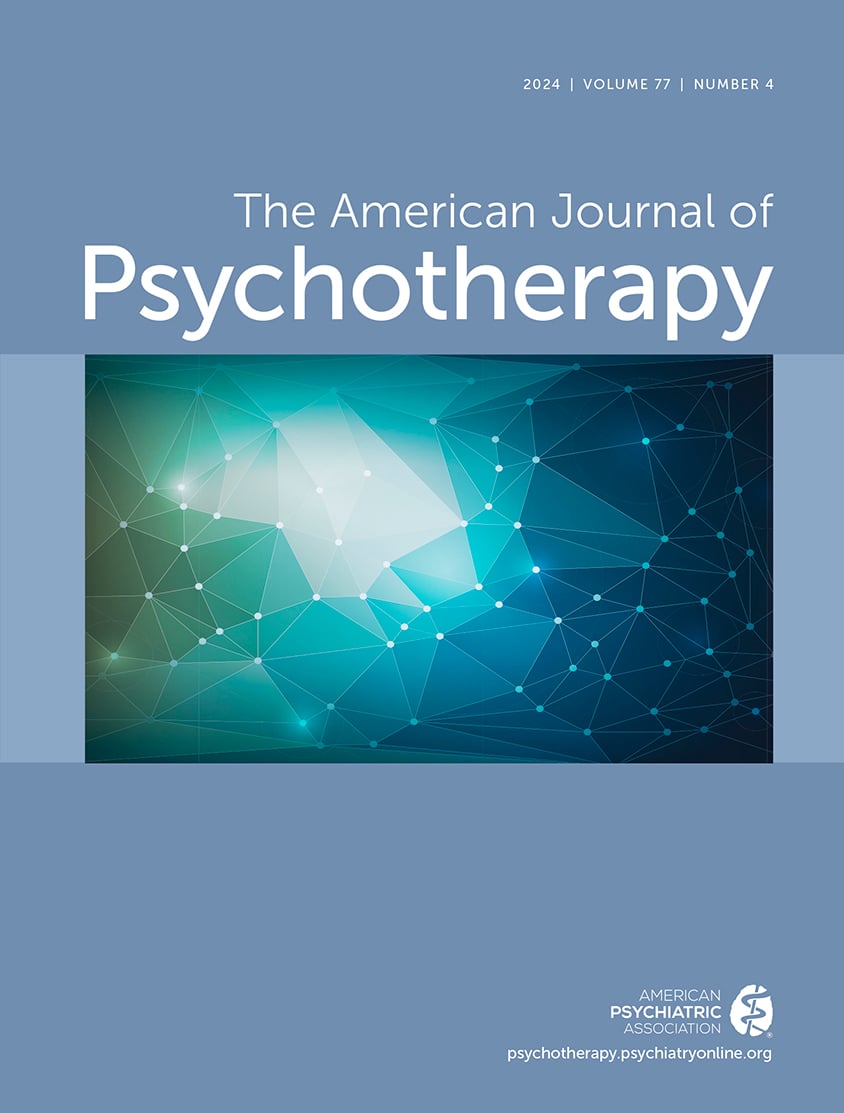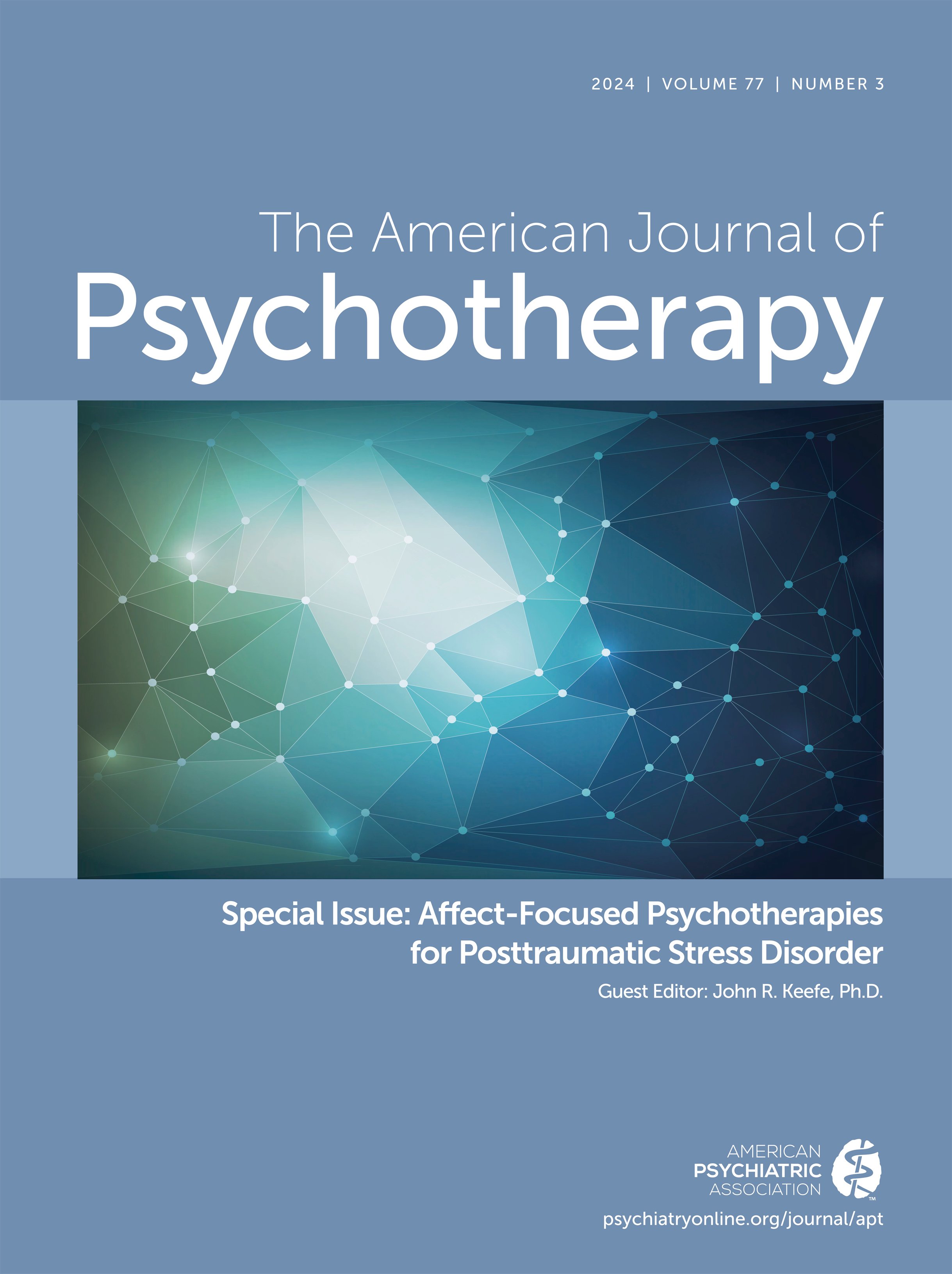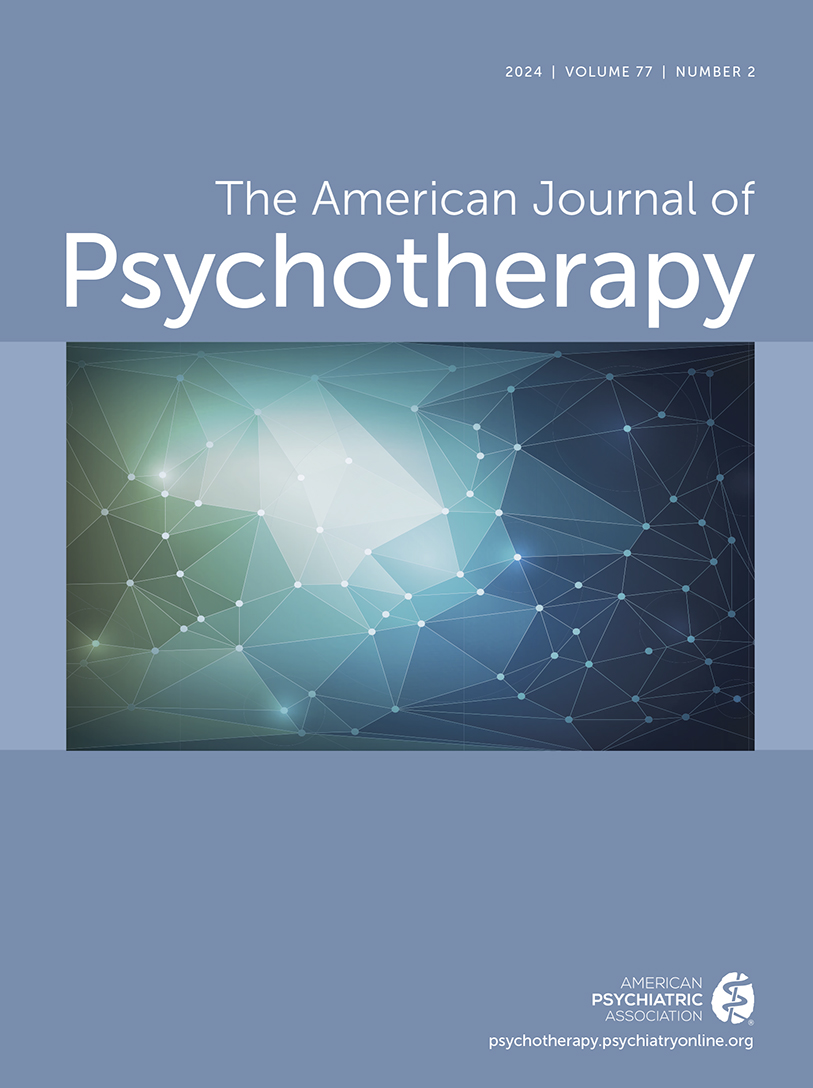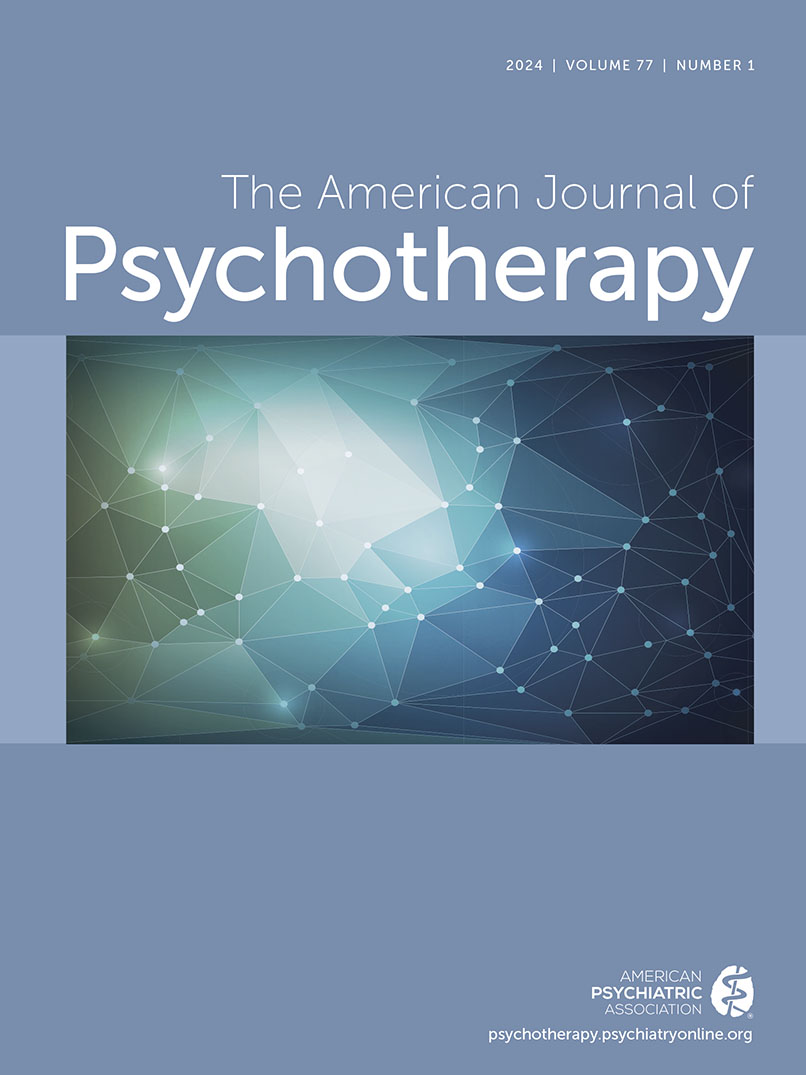American Journal of Psychotherapy
- Volume 49
- Number 1
- January 1995
Editorial
Articles
Publication date: 01 January 1995
Pages7–18Part I of this paper outlines the need for a general model of psychopathological processes, and introduces the basic components of this model drawn from multiple psychotherapeutic perspectives. The central concept of Personality Organization is described ...
https://doi.org/10.1176/appi.psychotherapy.1995.49.1.7Publication date: 01 January 1995
Pages19–27Part II of this paper deals with the interaction of the psychological organization of the individual with events in the environment such as “activators,” to create the personal meanings involved in thought, feelings and behaviors. The importance of ...
https://doi.org/10.1176/appi.psychotherapy.1995.49.1.19Publication date: 01 January 1995
Pages28–46An outpatient treatment program for young children with pervasive developmental disorder is described. It consists of sessions with parents and child to help the child develop social and communications skills, intensive instruction in basic life skills, ...
https://doi.org/10.1176/appi.psychotherapy.1995.49.1.28Publication date: 01 January 1995
Pages47–58Based on several recent books, this paper explores the contributions of evolutionary psychoanalysis and psychoanalytic social science and anthropology to our understanding of the human psyche and psychotherapy. The paper critiques recent pioneering ...
https://doi.org/10.1176/appi.psychotherapy.1995.49.1.47Publication date: 01 January 1995
Pages59–67We adapted the Bem Sex-Role Inventory to survey psychotherapists’ beliefs about gender-appropriate behavior. Women were more likely to choose the androgynous and masculine categories while men were more likely to choose the undifferentiated category as ...
https://doi.org/10.1176/appi.psychotherapy.1995.49.1.59Publication date: 01 January 1995
Pages68–94Polysemous qualities of the patient’s use of language and metaphor are among the subtle factors involved in the creation of an ambience conducive to projective identification, leading to the evolution of countertransference crises in the psychotherapist. ...
https://doi.org/10.1176/appi.psychotherapy.1995.49.1.68Publication date: 01 January 1995
Pages95–117Results from a random survey of psychologists (N = 850, 58% response rate), indicate therapists spend 40% of their clinical time doing brief therapy; however, one-third of the respondents reported they had little or no brief-therapy training. Therapists’ ...
https://doi.org/10.1176/appi.psychotherapy.1995.49.1.95Publication date: 01 January 1995
Pages118–127The legitimacy of the Martial Arts as not merely a set of fighting skills but as therapy is being postulated, based on evidence from the literature, and analysis of the structure of Martial Arts teaching. Moreover, illustrated by a clinical case report, ...
https://doi.org/10.1176/appi.psychotherapy.1995.49.1.118Case Report
Publication date: 01 January 1995
Pages128–148This paper investigates the link between maternal representational patterns and postpartum depression. A clinical case illustrates how (1) a young mother’s negative attachment to her own mother distorted memories of childhood experience, (2) a “regulator” ...
https://doi.org/10.1176/appi.psychotherapy.1995.49.1.128Book Review
Publication date: 01 January 1995
Pages150–151https://doi.org/10.1176/appi.psychotherapy.1995.49.1.150Publication date: 01 January 1995
Pages151–152https://doi.org/10.1176/appi.psychotherapy.1995.49.1.151Publication date: 01 January 1995
Pages152–153https://doi.org/10.1176/appi.psychotherapy.1995.49.1.152Publication date: 01 January 1995
Pages153–155https://doi.org/10.1176/appi.psychotherapy.1995.49.1.153Publication date: 01 January 1995
Pages155–156https://doi.org/10.1176/appi.psychotherapy.1995.49.1.155Publication date: 01 January 1995
Pages156–157https://doi.org/10.1176/appi.psychotherapy.1995.49.1.156Past Issues
View Issues Archive
Vol. 77 | No. 4

Vol. 77 | No. 3

Vol. 77 | No. 2
